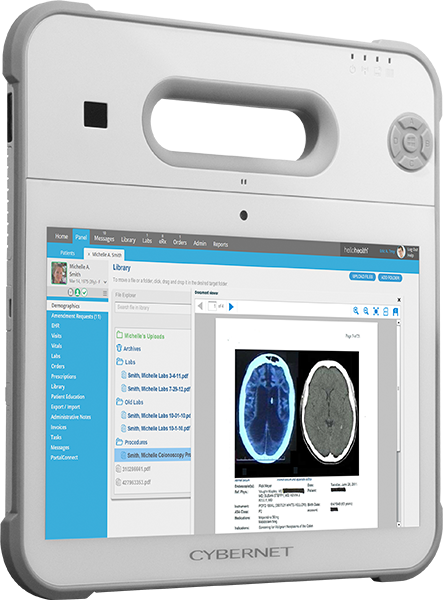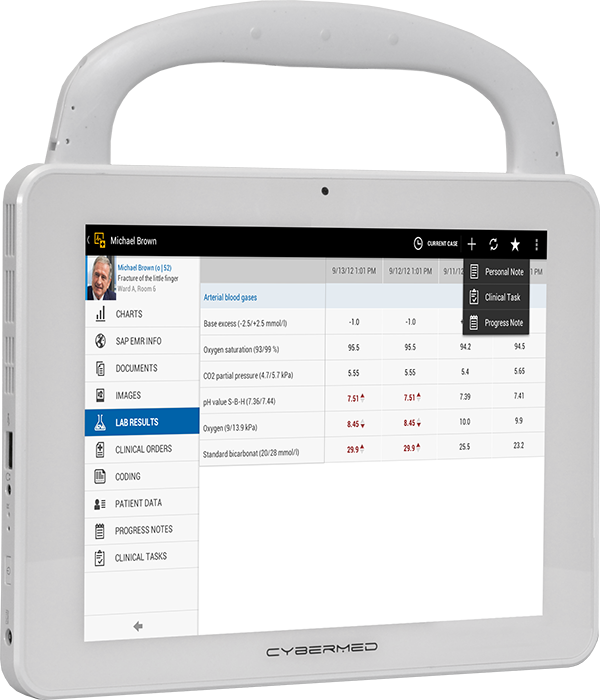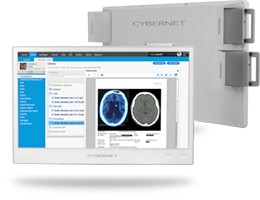Of all healthcare professionals, nurses spend the most time in close contact with patients. Their observations on the patient's health are vital, as subtle changes, such as a change in their mood or complaints of a persistent low-grade ache, may indicate more serious underlying issues. Various best practices have been developed to aid nurses in charting notes, ensuring they're clear, precise, and, for select cases, legally binding.
- What Are Nurse Charting Notes?
- Why Are Nurse Charting Notes Important?
- Best Practices for Writing Quality Nurse Charting Notes
- Advantages of Nurse Charting Notes with EMR
What Are Nurse Charting Notes?
Nurse charting (or simply, charting) documents all required information in the patient's medical record. Nurses update the patient's most current one, usually in point-of-care computer or on a tablet. "Required" information includes the nurse's observations, any interventions, medications administered, patient education, and any significant changes in the patient's condition. Depending on the healthcare group, various charting techniques, such as SOAP (Subjective, Objective, Assessment, Plan) and DAR (Data, Action, Response), are used by nurses.
Why Are Nurse Charting Notes Important?
Nurse charting isn't an afterthought or some mindless paper-pushing. Nurses' notes play a critical role in ensuring a high quality of care for patients. Effective documentation can:
- Contribute to Patient Continuity of Care - In brief, what is the quality of the patient's care over time? Were they diagnosed correctly? What was their food during each mealtime? What were their medicine dosages? All these details and more must be organized, coordinated, and documented between nurses, providers, and other medical staff.
- Communicate Care Goals - What is the overall care plan for this patient? Charting can provide answers, especially in the nurses' notes section of the medical record.
- Reimburse Insurance Claims - Nurse charting records billable services and their rationale for insurance companies or other payers. The group's medical coders and billers retrieve the information from their computers and process it accordingly.
- Provide Legal Protection - In the event of a lawsuit, the medical records created by charting provide documented evidence of the nurse's exact involvement with that patient's care.
- Demonstrate Nurse Competency - Professional regulators, from nursing colleges to licensing boards, can review nurses' SOAP notes and any other nursing notes in the electronic medical record (EMR) system to assess their knowledge, skills, judgment, and adherence to safe practices.
- Provide Data for Quality Improvement - Projects to improve healthcare, such as switching to a paperless healthcare solution like an EMR system, may include reviewing medical charts to understand the care process.
Best Practices for Writing Quality Nurse Charting Notes
The required information in nurse charting includes anything legal, professional, and specific to that particular medical group. Various "best practices" have arisen so nurses don't have to learn new charting methods each time they change employers or even departments.
- Maintain Professionalism - Always use respectful and professional language. Use approved abbreviations and terminology, especially when using legal words and phrases.
- Be Objective and Precise - Ensure the information is correct and reflects the patient's actual status. Stick to the facts and observable behaviors, avoiding subjective interpretations, assumptions, and opinions.
- Use Standardized Formats - Follow chart techniques like SOAP or DAR. This ensures the notes are easily understood by anyone reading them, especially other medical staff members and legal personnel.
- Stay Timely - Chart immediately after each patient visit to reduce errors and omissions.
Advantages of Nurse Charting Notes with EMR
In the past, nurse charting was done on paper charts and files to track patients' conditions and medical histories. Everything was handwritten, from patient information to nursing notes.
The digital transformation of healthcare ditched all that paper to move nurse charting into EMRs. Nurses are leveraging templates, voice recognition tools, and even AI in nurse documentation. The advantages are numerous:
- Speed: Nurse charting can be done faster and more accurately on a keyboard or touchscreen than by hand.
- Standard form: The fields in an EMR display precisely what's needed about the patient, such as their name, current medications, and treatment plan, all in a legible form. During charting, EMRs can alert the nurse if anything important is missing or if there's a question about specific inputs (For example, dosage).
- Shareability: In the past, patient paper records had to be photocopied and sent to all participants via fax or mail. Today, EMRs allow multiple medical personnel to look at the patient's information simultaneously.
- Point of Care: Nurse charting can be entered right at the patient's side through an AIO or medical computer tablet. There is no more hassle retrieving the correct files from the nurses' station or re-entering the information into a stationary computer later in the shift.
- Traceability: EMRs automatically date and time each entry from nurse charting and identify electronic deletions. This feature aids in circumstances like tracing unusual patient symptoms and conducting legal investigations.
- Protect patient privacy: To be HIPAA-compliant, medical computers incorporate numerous security features, including RFID identification and Imprivata Single Sign-On. These features ensure the nurse's input from charting remains secure throughout the healthcare network.
- Greater and consistent accuracy: Built-in barcode scanners and RFID readers in medical computers can make important yet tedious tasks, such as patient and drug identification during nurse charting, easy and with minimal error.
Nurse Charting Done Right with Cybernet Computers
Nurse charting tracks patients' medical histories, progress, and care needs during their hospital stay and sometimes after discharge. To ensure the accuracy and legibility of information, nurse charting and any notes within them are standardized, making them easy for authorized medical personnel to review.
Most of today's nurse charting is done in electronic medical records. Contact Cybernet Manufacturing if you're looking for the right EMR computer for their essential work. Our team members will be happy to discuss the special features of our medical computer lineup, including medical-grade certification, fanless design, and sealed IP65 front bezels.
Do you need help finding exactly what you need? Cybernet is an original equipment and design manufacturer. We have complete control over every aspect of our products, including network options and privacy screen protection. We're confident we can develop the configuration that's just right for your nursing staff when charting.


